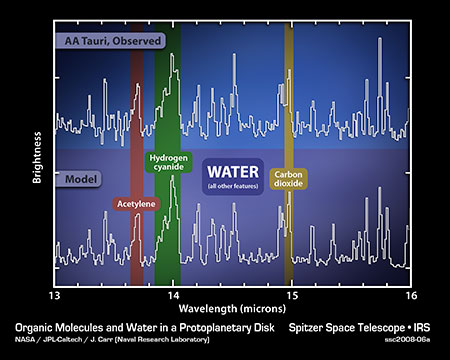
Below is a list of Exoplanet Catalogues. A list of lists, a Meta-Catalogue of Exoplanets. Very handy for cross-referencing exoplanet data. I will continually update this particular post as I come across new ones. You may come back to this post by clicking on the keyword "catalogue" from the tag-cloud on the lower right column.
EXOPLANET LISTS AND CATALOGUESExtrasolar Planets EncyclopaediaURL: http://exoplanet.eu/catalog.php
Description: The most updated one, and has the most options for interactive filtering and sorting. And its the oldest one too, i think.
New Worlds AtlasURL: http://planetquest.jpl.nasa.gov/atlas/atlas_search.cfm
Description: This one has a nice visual interface and a cool website. It has some nice filters for you to extract the relevant data that you need from the dataset.
California and Carnegie Planet SearchURL: http://exoplanets.org/planets.shtml
Description: This one has features a Sortable Table by clicking on the table headers.
Planetary BiologyURL: http://www.planetarybiology.com/exoexplorer_planets/
Description: This is the most interesting catalogue since it ranks planets according to the likelihood of life. Though it also uses data from the Exoplanet Encyclopedia.
Geneva ObservatoryURL: http://obswww.unige.ch/~naef/who_discovered_that_planet.html
Description: I dont know what to say yet.
Working Group on Extrasolar PlanetsURL: http://www.dtm.ciw.edu/boss/planets.html
Description: A simple list of exoplanets. No interface.
Transiting PlanetsURL: http://www.inscience.ch/transits/
Description: List of transiting planets
List of Stars with Confirmed ExoplanetsURL: http://en.wikipedia.org/wiki/List_of_stars_with_confirmed_extrasolar_planets
Description: A good reference list.
Paris Observatory Catalog of ExoplanetsURL: http://media4.obspm.fr/exoplanets/base/index.php
Description: A catalogue maintained by the French-led Paris Observatory group. A good up-to-date list.
NStEDURL: http://nsted.ipac.caltech.edu
Description: A good source of data about Stars and Exoplanets. Combo is good!
Exoplanetology on FreebaseURL: http://www.freebase.com/view/user/metapsyche/exoplanetology/exoplanet
Description: A new entry on freebase that opens up an open collaborative effort for maintaining the list. Data that would not have been included in the dataset are taken into account and organized. Another advantage is that freebase has an API which opens up the data set for more robust interactive applications. Anyone with a serious interest in exoplanets may contribute to this list, but you need to sign up for a freebase account.
 As I imported the names of all the known exoplanets into freebase, the pattern was very apparent. In most cases, Exoplanets are named after their parent star, such as 51 Pegasi b (51 Peg b for short), where the parent star is 51 Pegasi, and the last letter "denotes" the planet in chronological order of discovery. You would never find a capital "A" planet because it denotes the parent star itself. Thus, the first planet that is detected upon a star is named as "[star_name] b". The succeeding exoplanets to be discovered in that solar system will then follow the alphabetical sequence for it's designated letter. Example: Gliese 876 b and Gliese 876 c was discovered in 2000, Gliese 876 d in 2005.
As I imported the names of all the known exoplanets into freebase, the pattern was very apparent. In most cases, Exoplanets are named after their parent star, such as 51 Pegasi b (51 Peg b for short), where the parent star is 51 Pegasi, and the last letter "denotes" the planet in chronological order of discovery. You would never find a capital "A" planet because it denotes the parent star itself. Thus, the first planet that is detected upon a star is named as "[star_name] b". The succeeding exoplanets to be discovered in that solar system will then follow the alphabetical sequence for it's designated letter. Example: Gliese 876 b and Gliese 876 c was discovered in 2000, Gliese 876 d in 2005. 






